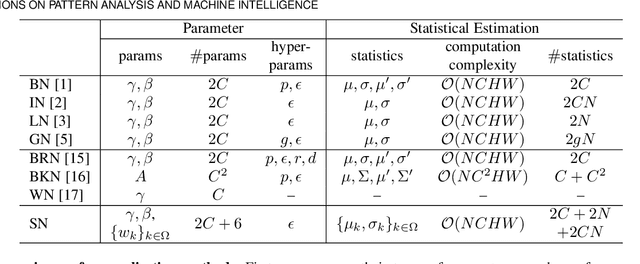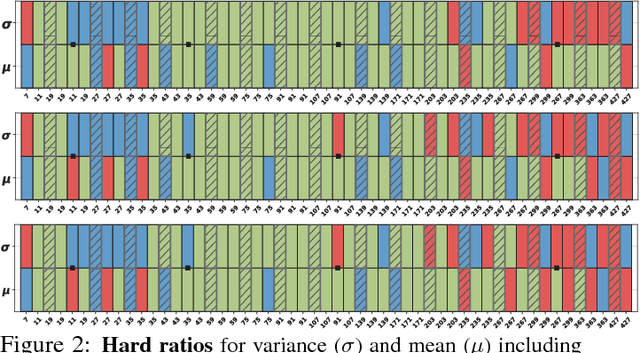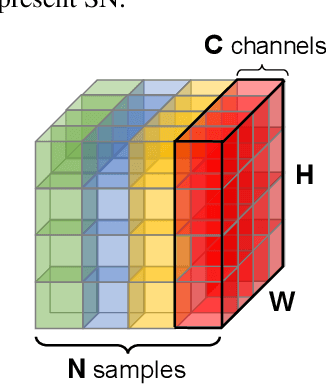Jiamin Ren
GLM-4.5: Agentic, Reasoning, and Coding (ARC) Foundation Models
Aug 08, 2025Abstract:We present GLM-4.5, an open-source Mixture-of-Experts (MoE) large language model with 355B total parameters and 32B activated parameters, featuring a hybrid reasoning method that supports both thinking and direct response modes. Through multi-stage training on 23T tokens and comprehensive post-training with expert model iteration and reinforcement learning, GLM-4.5 achieves strong performance across agentic, reasoning, and coding (ARC) tasks, scoring 70.1% on TAU-Bench, 91.0% on AIME 24, and 64.2% on SWE-bench Verified. With much fewer parameters than several competitors, GLM-4.5 ranks 3rd overall among all evaluated models and 2nd on agentic benchmarks. We release both GLM-4.5 (355B parameters) and a compact version, GLM-4.5-Air (106B parameters), to advance research in reasoning and agentic AI systems. Code, models, and more information are available at https://github.com/zai-org/GLM-4.5.
UXNet: Searching Multi-level Feature Aggregation for 3D Medical Image Segmentation
Sep 16, 2020



Abstract:Aggregating multi-level feature representation plays a critical role in achieving robust volumetric medical image segmentation, which is important for the auxiliary diagnosis and treatment. Unlike the recent neural architecture search (NAS) methods that typically searched the optimal operators in each network layer, but missed a good strategy to search for feature aggregations, this paper proposes a novel NAS method for 3D medical image segmentation, named UXNet, which searches both the scale-wise feature aggregation strategies as well as the block-wise operators in the encoder-decoder network. UXNet has several appealing benefits. (1) It significantly improves flexibility of the classical UNet architecture, which only aggregates feature representations of encoder and decoder in equivalent resolution. (2) A continuous relaxation of UXNet is carefully designed, enabling its searching scheme performed in an efficient differentiable manner. (3) Extensive experiments demonstrate the effectiveness of UXNet compared with recent NAS methods for medical image segmentation. The architecture discovered by UXNet outperforms existing state-of-the-art models in terms of Dice on several public 3D medical image segmentation benchmarks, especially for the boundary locations and tiny tissues. The searching computational complexity of UXNet is cheap, enabling to search a network with the best performance less than 1.5 days on two TitanXP GPUs.
Switchable Normalization for Learning-to-Normalize Deep Representation
Jul 22, 2019



Abstract:We address a learning-to-normalize problem by proposing Switchable Normalization (SN), which learns to select different normalizers for different normalization layers of a deep neural network. SN employs three distinct scopes to compute statistics (means and variances) including a channel, a layer, and a minibatch. SN switches between them by learning their importance weights in an end-to-end manner. It has several good properties. First, it adapts to various network architectures and tasks. Second, it is robust to a wide range of batch sizes, maintaining high performance even when small minibatch is presented (e.g. 2 images/GPU). Third, SN does not have sensitive hyper-parameter, unlike group normalization that searches the number of groups as a hyper-parameter. Without bells and whistles, SN outperforms its counterparts on various challenging benchmarks, such as ImageNet, COCO, CityScapes, ADE20K, MegaFace, and Kinetics. Analyses of SN are also presented to answer the following three questions: (a) Is it useful to allow each normalization layer to select its own normalizer? (b) What impacts the choices of normalizers? (c) Do different tasks and datasets prefer different normalizers? We hope SN will help ease the usage and understand the normalization techniques in deep learning. The code of SN has been released at https://github.com/switchablenorms.
Do Normalization Layers in a Deep ConvNet Really Need to Be Distinct?
Nov 19, 2018



Abstract:Yes, they do. This work investigates a perspective for deep learning: whether different normalization layers in a ConvNet require different normalizers. This is the first step towards understanding this phenomenon. We allow each convolutional layer to be stacked before a switchable normalization (SN) that learns to choose a normalizer from a pool of normalization methods. Through systematic experiments in ImageNet, COCO, Cityscapes, and ADE20K, we answer three questions: (a) Is it useful to allow each normalization layer to select its own normalizer? (b) What impacts the choices of normalizers? (c) Do different tasks and datasets prefer different normalizers? Our results suggest that (1) using distinct normalizers improves both learning and generalization of a ConvNet; (2) the choices of normalizers are more related to depth and batch size, but less relevant to parameter initialization, learning rate decay, and solver; (3) different tasks and datasets have different behaviors when learning to select normalizers.
Differentiable Learning-to-Normalize via Switchable Normalization
Sep 30, 2018



Abstract:We address a learning-to-normalize problem by proposing Switchable Normalization (SN), which learns to select different normalizers for different normalization layers of a deep neural network. SN employs three distinct scopes to compute statistics (means and variances) including a channel, a layer, and a minibatch. SN switches between them by learning their importance weights in an end-to-end manner. It has several good properties. First, it adapts to various network architectures and tasks (see Fig.1). Second, it is robust to a wide range of batch sizes, maintaining high performance even when small minibatch is presented (e.g. 2 images/GPU). Third, SN does not have sensitive hyper-parameter, unlike group normalization that searches the number of groups as a hyper-parameter. Without bells and whistles, SN outperforms its counterparts on various challenging benchmarks, such as ImageNet, COCO, CityScapes, ADE20K, and Kinetics. Analyses of SN are also presented. We hope SN will help ease the usage and understand the normalization techniques in deep learning. The code of SN has been made available in https://github.com/switchablenorms/.
 Add to Chrome
Add to Chrome Add to Firefox
Add to Firefox Add to Edge
Add to Edge